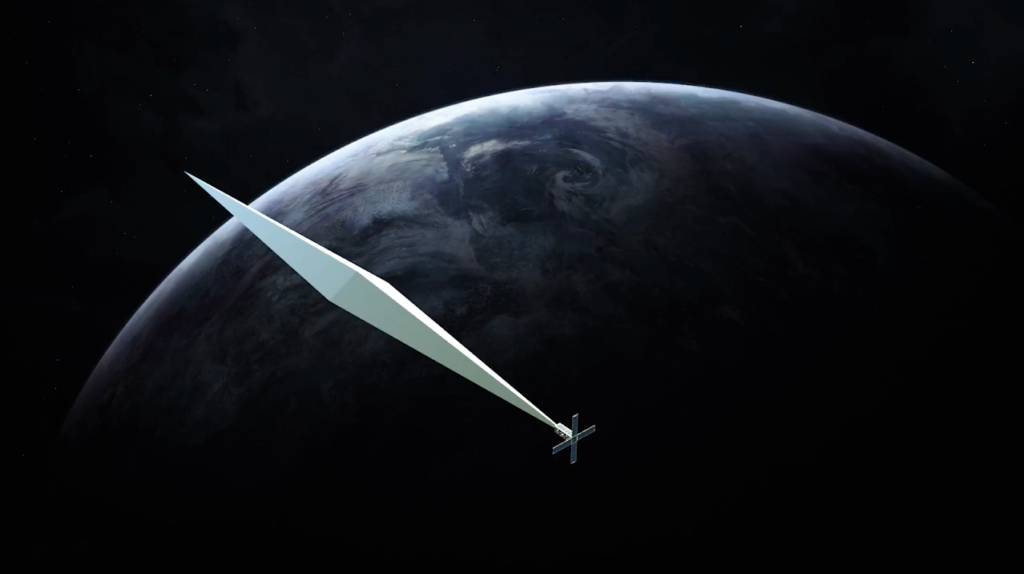Art World
Artist Trevor Paglen’s $1.5 Million ‘Orbital Reflector’ Is Officially Lost in Space Thanks to President Trump’s Government Shutdown
Engineers lost touch with the satellite when the FCC went silent during the government shutdown.

Engineers lost touch with the satellite when the FCC went silent during the government shutdown.

Naomi Rea

Trevor Paglen’s $1.5 million satellite has been lost in space—and Donald Trump’s 35-day government shutdown in January could be to blame. The pioneering artist and MacArthur Genius Grant recipient successfully launched his ambitious installation, Orbital Reflector, into space at the end of last year, but prolonged radio silence from the government during the unforeseen shutdown meant that engineers missed the window to complete the deployment of the work, a 100-foot-long diamond-shaped mylar balloon that could be tracked from earth.
Officials at the Nevada Museum of Art, which helped produce the work, confirmed in a statement that the work cannot presently be tracked.
The ambitious installation was in development for 10 years. It was launched into space in early December 3 on a SpaceX Falcon 9 rocket, along with 64 other satellites that had various utilities. The plan was for it to be delivered 350 miles into the thermosphere—one of the layers of Earth’s atmosphere—before inflating the balloon.
It was intended to inflate Orbital Reflector once it drifted away from the cluster of satellites it was released with in order to avoid collision. After that, it was meant to orbit Earth for a few months, where it would be visible from Earth, before being burned up by the atmosphere. A statement from museum officials explains that two unexpected events occurred early on in its journey. The first was that the US Air Force was unable to distinguish between the satellites because there were so many of them, so it was unclear when the package containing Orbital Reflector would be cleared to inflate.
The second was that the Federal Communications Commission “was unavailable to move forward quickly due to the US government shutdown.” Before the shutdown, the museum had been working with the FCC to release the balloon at the exact right time for a safe trajectory. Museum officials were waiting for a green light from the federal agency but all communications halted during the shutdown and, by the time communications resumed, the museum’s engineers had lost touch with the satellite.
“The satellite’s electronics and hardware were designed to function during this waiting period but were not hardened for long-term functionality in space,” a museum spokesperson said. Officials now believe that the small brick-sized box containing the balloon is still orbiting the earth, but because of its small size it is now believed that it will be a few years, rather than the initially expected months, before the work of art burns up in the atmosphere.
The ambitious project, partly inspired by the Russian painter Kazimir Malevich’s vision of a world orbited by artworks called “Sputniks,” was the first-ever satellite sent into space for art’s sake alone. Meant to be trackable from Earth via a sky-watching app, the project aimed to encourage people around the world to “re-envision space as a place of possibility.”
While some detractors initially raised concerns about project, likening it to a billboard in the sky, Paglen has defended the work. He responded to concerns that it would interfere with astronomers’ research by arguing that it would actually encourage people to learn more about orbits and how the planet works in their attempts to track Orbital Reflector.
“Why are we offended by a sculpture in space, but we’re not offending by nuclear missile targeting devices or mass surveillance devices, or satellites with nuclear engines that have a potential to fall to earth and scatter radioactive waste all over the place?” Paglen asked while speaking to artnet News about the project last summer. Paglen did not immediately respond to a request for comment on the recent developments.
Due to the unforeseen technical difficulties, that is now it for Paglen’s monumental project. But despite its early ending, the museum is still calling the endeavor a success. “Paglen wanted the world to ask serious questions about who controls space: Does anyone own it? And who ultimately decides how it is used?” museum spokeswoman Amanda Horn writes in statement. “The final chapter of Orbital Reflector brings these questions and issues to the forefront. Like pioneering Land Artists of the late 1960s, whose larger-than-life gestures in extreme desert environments changed the course of art history, Paglen’s radically experimental endeavor will be forever etched into the narrative of 21st-century contemporary art practice.”